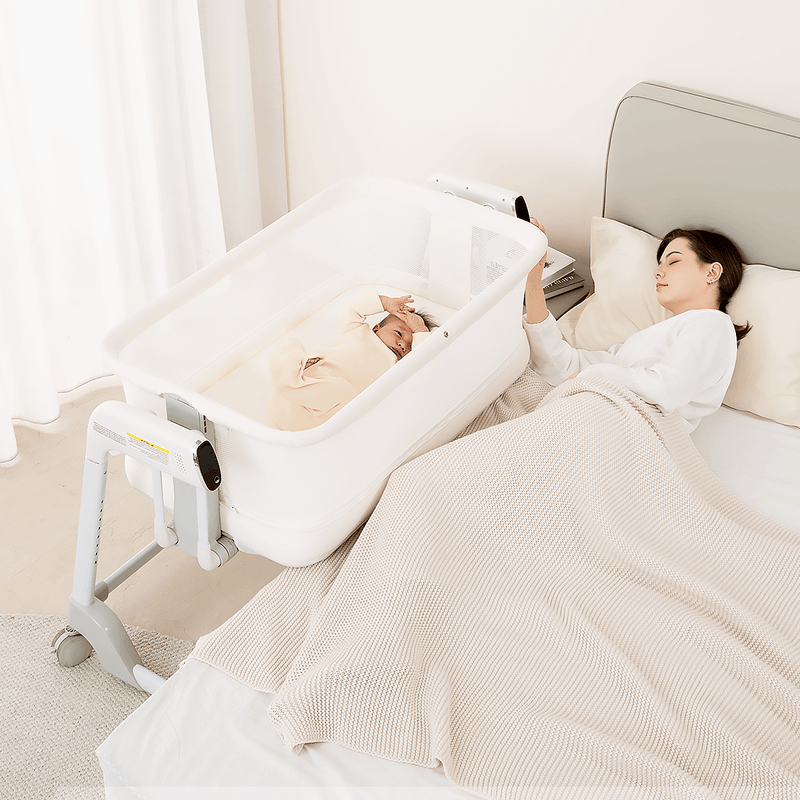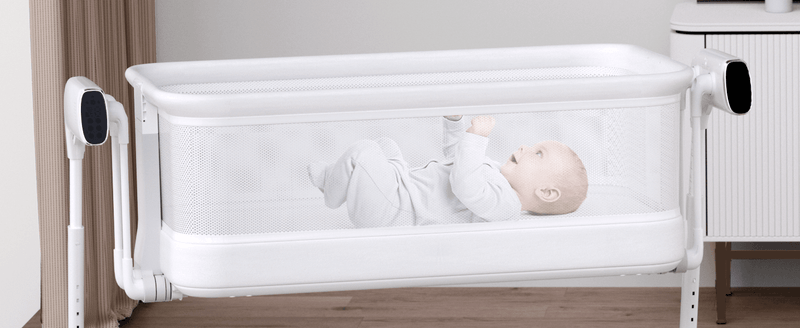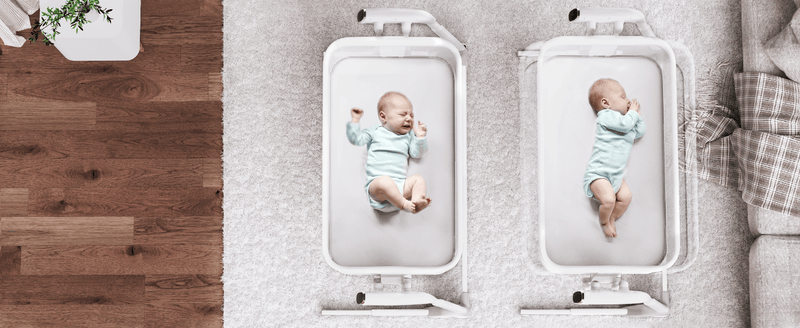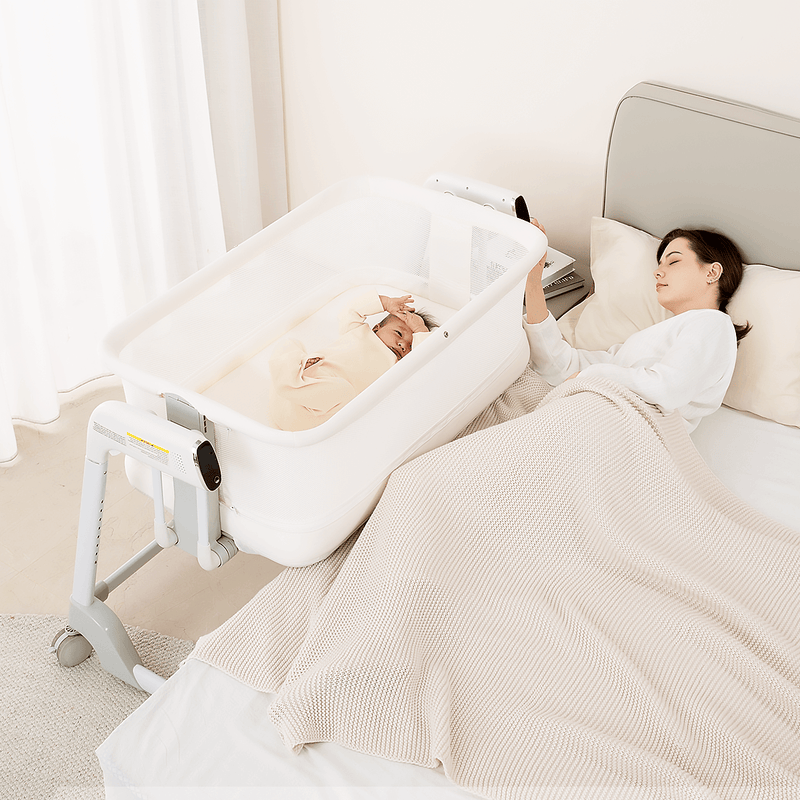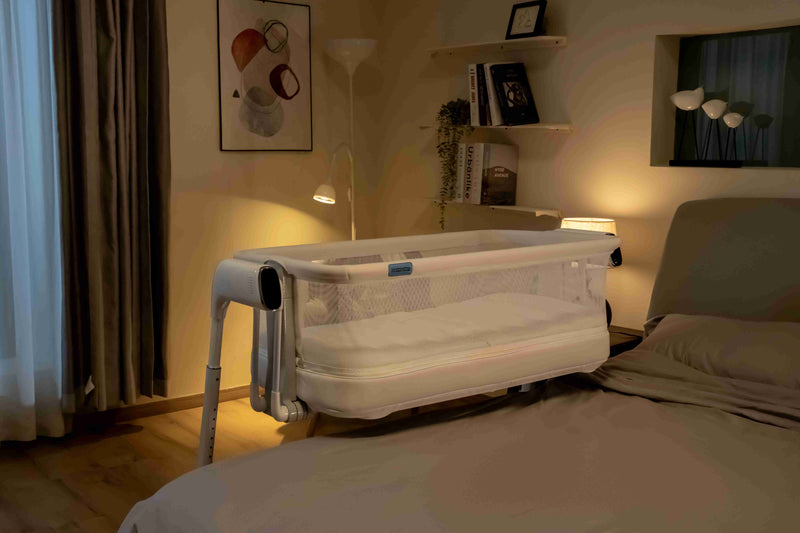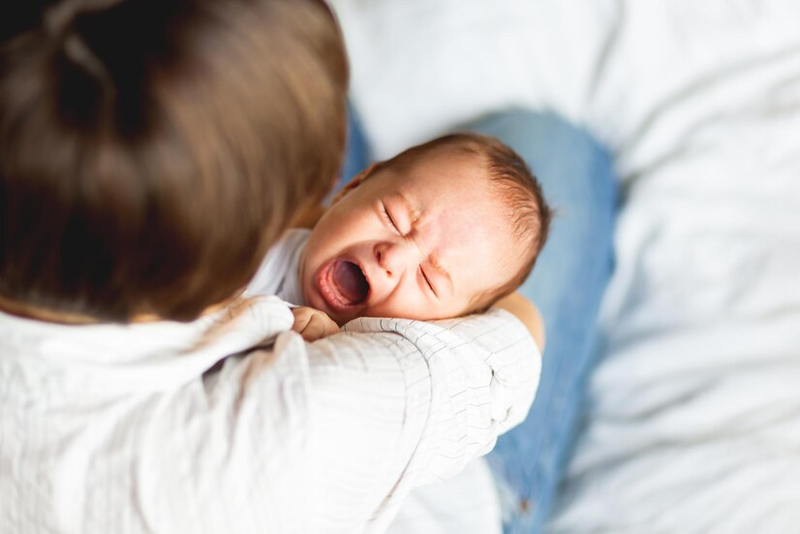
Bedside Sleeper Safety: AAP Guidelines Every Parent Should Know
There is a moment every new parent faces: It is 3:00 AM, you are exhausted, and you just want to bring your baby into your bed so you can both finally get some sleep. But then, the worry sets in. You’ve heard the warnings about bed-sharing. You want to be close to your baby, but you also want to follow the rules. This is where the Bedside Sleeper (often called a co-sleeper bassinet) enters the chat. It is designed to offer the "best of both worlds"—the closeness of co-sleeping with the safety of a separate sleep surface. However, using one correctly is non-negotiable. Here is a breakdown of the American Academy of Pediatrics (AAP) guidelines and how to ensure your baby bedside bassinet is set up for maximum safety. Room-Sharing vs. Bed-Sharing: The Crucial Difference First, let's clarify the terminology, because the difference saves lives. Bed-Sharing: Sleeping in the same bed with your baby. The AAP strongly recommends against this due to risks of suffocation, entrapment, and SIDS (Sudden Infant Death Syndrome). Room-Sharing: Sleeping in the same room, but on separate surfaces. The AAP recommends this for at least the first 6 months. A 3 in 1 bassinet crib facilitates Room-Sharing. It allows you to keep your baby within arm's reach—making breastfeeding and soothing easy—without the risks associated with adult mattresses and bedding. The Safety Checklist: Setting Up Your Bedside Sleeper Just buying a safe product isn't enough; you have to install it correctly. Here are the specific safety features you need to look for and check daily. 1. Mind the Gap (Entrapment Risk) The most critical safety rule for bedside sleepers is preventing gaps. There must be no space between the sleeper’s mattress and the parent’s adult mattress. A baby can easily roll into a gap and become trapped. The Fix: Always use the anchor straps provided with your smart baby crib. These straps slide under your adult mattress to pull the bassinet tight against your bed, ensuring a flush fit. 2. Height Matters The mattress of the bedside sleeper should be level with (or slightly lower than) your adult mattress. It should never be higher, as your baby could roll out onto your bed. The Feature: Look for a model with adjustable height settings. A versatile smart bassinet will allow you to fine-tune the height to perfectly match your bed frame. 3. The Mattress: Firm is Best We adults love pillow-top mattresses and memory foam. Babies do not. Soft surfaces are a suffocation hazard. The Rule: The bassinet mattress must be firm and flat. It should not indent when the baby lies on it. Do not add extra blankets, pillows, or stuffed animals to the bassinet. The only thing that belongs in the crib is the baby (and a pacifier, if they like one). 4. Breathability and Airflow SIDS prevention is partly about ensuring your baby doesn't overheat and has fresh air to breathe, even if they scoot up against the side of the bassinet. The Feature: Choose a sleeper with mesh walls. This not only allows for airflow but also lets you see your baby through the fabric without having to sit up. A bassinet with wheels and mesh sides is ideal because it keeps the environment airy and allows you to move the bassinet away from drafts or direct sunlight easily. When to Stop Using a Bedside Sleeper Safety guidelines change as your baby grows. A bedside sleeper is generally safe until your baby can: Roll over consistently. Push up on their hands and knees. Sit up unassisted. Once your baby reaches these milestones (usually around 4-6 months), it becomes dangerous to leave the side wall lowered, as they could tumble out. At this stage, you should zip up the side wall to convert it into a standalone crib or transition them to a larger portable bassinet or playard. The Bottom Line A bedside sleeper is a wonderful tool for exhausting newborn nights. It allows you to nurse, soothe, and check on your baby without your feet ever hitting the cold floor. By following these AAP guidelines—firm surface, tight fit, no loose bedding—you can sleep soundly knowing your little one is close and safe. For more information on safe sleep setups, explore our guide on setting up a rolling bassinet for different rooms in your home.













